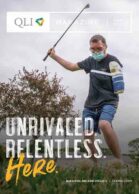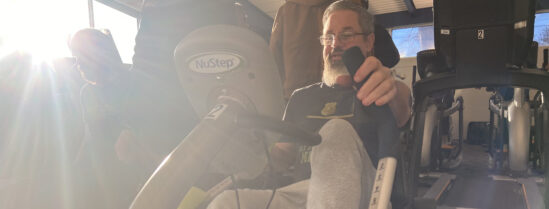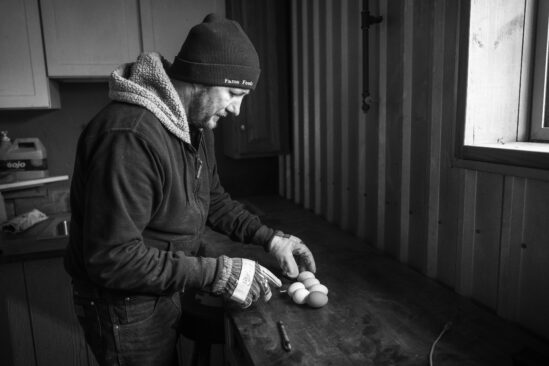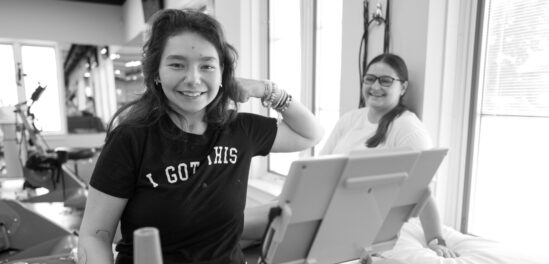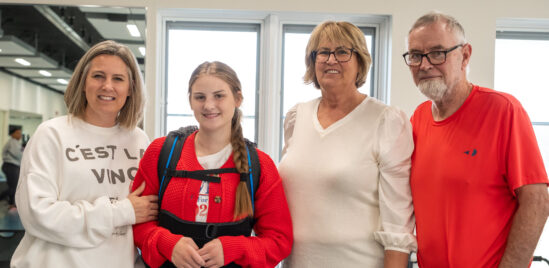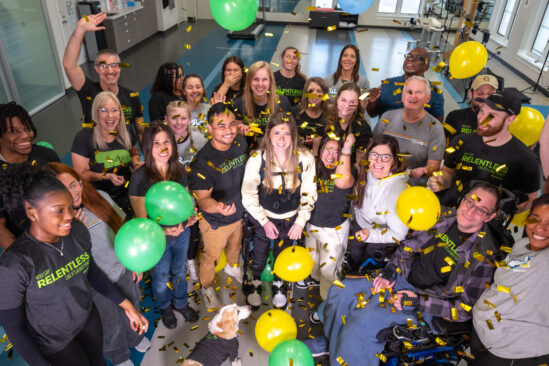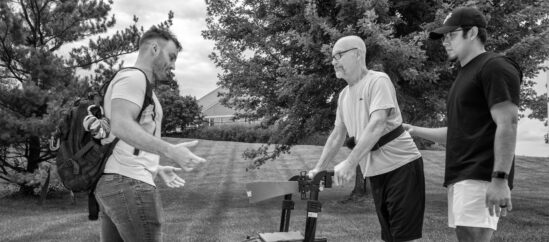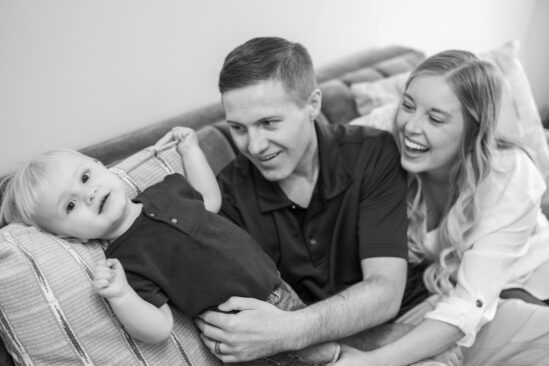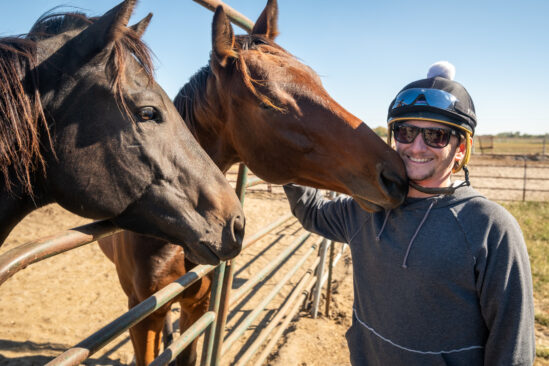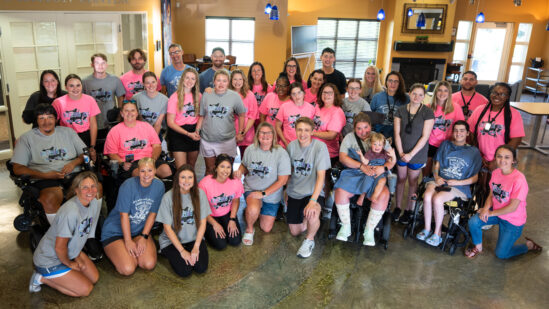Take a moment to think about the act of driving a car. Consider the open road—how good it felt to sit in the driver’s seat of your first vehicle; how much it meant to look at your car as a symbol of freedom; how important your current vehicle is as a tool of necessity, as a sign of independence.
Consider what a single day would look like if you had no access to your vehicle. Perhaps this is relatable—all of us know the frustration of car trouble or the familiar helplessness of having a car in the shop.
Go one step further: What if you couldn’t use your hands to manipulate a steering wheel? What if you couldn’t turn a key in an ignition or pull an automatic gear shifter from park to drive to reverse?
How about one step more: What if you couldn’t enter your vehicle—or any vehicle—at all? What if you were locked to a bulky power wheelchair, or even a more manageable manual wheelchair, still something so unwieldy you couldn’t seat yourself in a car?
Imagine what it would be like to lose all access to a vehicle. Do you think it would be possible to drive again?

BEHIND THE WHEEL ONCE AGAIN
Where survivors of severe injury might not expect to return to normal vehicle access, QLI’s adaptive driving program provides a one-of-a-kind opportunity to break down barriers and get back on the road. Quietly one of the most powerful components of its broader rehabilitation and care curriculum, QLI’s adaptive driving program has become one of the most comprehensive services of its kind in the country. Led by QLI occupational therapist Erin Young, the program utilizes an impressive arsenal of assistive technology to bridge the gap between impairment and independence. It’s a process that requires months of planning, evaluation, and practice, one that evolves in concert with an individual’s progress in rehab.
“One of the benefits of having the driving program be a central part of rehab is that we’re so collaborative here,” Young says. “Anyone who is appropriate for the driving program is assessed by the clinical team, and all of our team members work together to make that recommendation with a deep understanding of their abilities and areas needing work—because we’re already with them eight-plus hours a day, every day.”
Where other adaptive driving courses, including many hospital-based programs, operate independent of clinical oversight, QLI’s program incorporates its clinical experts as a crucial component. Therapists participate in evaluations and training sessions and maintain regular communication with Young, who leverages her own occupational therapy background, as well as an expertise in assistive technology, to identify the best path to a successful reentry into driving.
Given the severity of the injuries QLI treats, driving trainees often begin with “high-tech” driving training. This includes a console- or dashboard-mounted touchscreen to provide global control over the vehicle’s ignition, gear, lights, interior heating and cooling, and more. It also includes an electric steering assist system and a hand-controlled gas and brake lever. QLI keeps a modifiable adaptive van onsite, fully equipped with cutting-edge computer systems and modular assistive devices, giving rehab clients the chance to practice driving extremely early in the recovery process.
But Young admits it isn’t common for aspiring drivers to stick with high-tech solutions, that drivers typically graduate to more traditional forms of motor vehicle operation.
“That’s the result of longer lengths of stay at QLI,” she says. “That’s the impact of more, and more intensive, rehab. You see a person’s driving abilities and needs change on a curve similar to their clinical gains.”
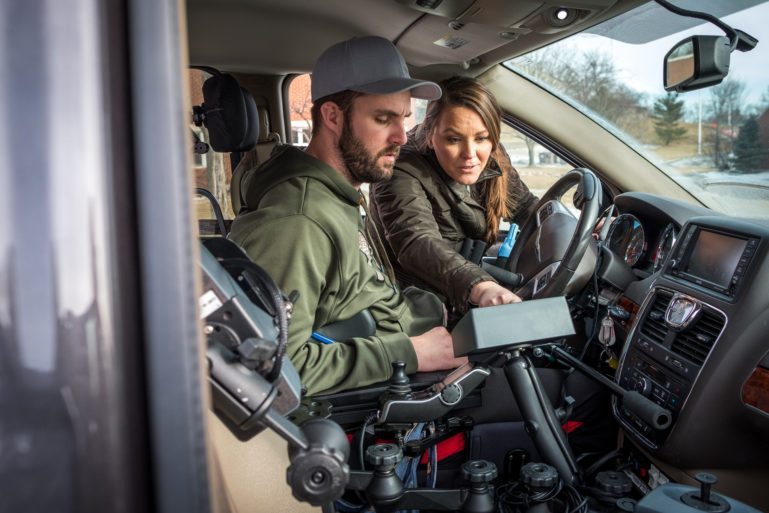
PRACTICE MAKES PERFECT
By weaving the adaptive driving program into the greater continuum of QLI’s rehabilitation services, QLI benefits prospective drivers by not only reducing the need for assistive tools in relation to physical gains, but by offering a wealth of experience.
Free-standing adaptive driving services bill for individual evaluations and classes, and they frequently establish a rigid, limited schedule. In many cases, entrants are funneled out of the program after only 3 days of training.
With an average length of stay in QLI’s rehabilitation program between 90 and 100 days, QLI’s program allows for far more time behind the wheel.
“Driving, especially with modifications, is a whole new world,” Young says. “The pressure of that sudden responsibility can be nerve-racking. It can be scary. We’re lucky here in the sense that, if someone wants just a little more practice to feel confident—not just competent, but confident—we can offer that to them. It’s not an extra fee. The path to driving independently is part of their rehab. It’s designed to be taken advantage of.”
That confidence is a result of functional training—real-world training, the kind that emulates a person’s true-to-life activity.
As is the case with other pieces of QLI, an individual’s natural progression provides fertile ground for continued success. Driving sessions might start humbly, with slow laps around QLI’s campus roads, but eventually graduate to simple two-lane roads, then to busier urban streets before finally giving drivers the chance to navigate the Omaha-area interstate system.
The training takes on special relevance as well: As the larger clinical program begins laying the building blocks for an individual’s return to life, so too does QLI’s adaptive driving program. Driving tasks become more than simple exercises—they are personalized for a person’s lifestyle. What will driving to work look like? How about driving to college, parking, going to class, and leaving? Going out to eat? Buying groceries?
The program, in effect, becomes practice for everyday life. Something beyond a fast-track to driving competence.
“Omaha is great in that way. It’s such a diverse metropolitan area—we’re able to drive in situations that will be like the situations they’ll have back home. We can drive in circumstances that make sense for that person,” Young says.
Therapists at QLI collaborate to make rehabilitation relevant in all ways, ensuring that the transition to independence isn’t just smooth—it’s seamless.
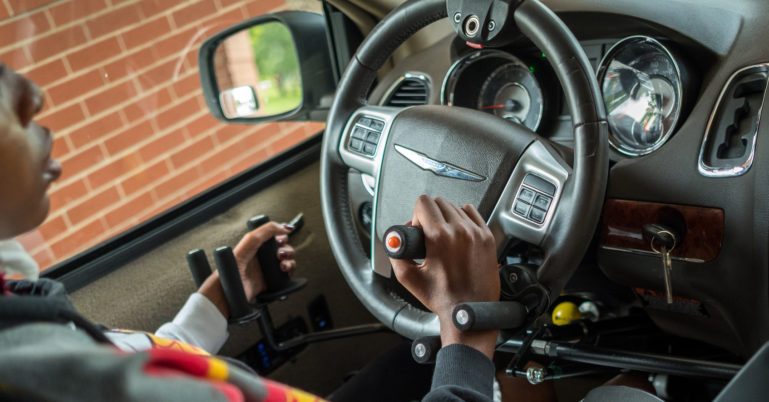
BEYOND TRAINING
Of course, QLI’s involvement reaches past the driving training itself. As rehab clients near the end of their stay at QLI, Young begins communicating with their local Department of Motor Vehicles to determine the steps necessary to acquire a license. This can often mean additional tests, both written and driving-based, even if Young has given her official sign-off on an individual’s driving abilities.
As licensing and accreditation requirements vary by state, Young dedicates time to finalizing paperwork with the driver, both for her own knowledge and to eliminate the burden on the the participant.
“I don’t really know of other adaptive driving resources that do that sort of thing. Our goal is to make sure that, by the time they leave, they can be ready to drive the right way,” says Young.
The effort continues further: When it’s time to modify or purchase a vehicle, Young and QLI’s team of therapists collaborate with the individuals and their families to find the best solution. Often, this means identifying the driver’s vehicular needs, determining modifications that meet their abilities, and navigating complicated factors—factors that include cost.
Traditionally, adaptive drivers found themselves relegated to modified vans because of their ease of access and ease of customization. But the traditional one-size-fits-all solution to adaptive vehicles is vanishing. Young herself describes adaptive vans as a “square peg, round hole” answer to the needs of most drivers coming out of QLI, and has embraced their interest in vehicles that better fit their varied lifestyles. Recent graduates have gone on to purchase compact sedans, sporty all-wheel-drive hatchbacks, even full-size pickup trucks.
“If you or I are buying a vehicle, we’d shop around,” Young says. “We’d be particular about its features, its style. That shouldn’t be different for someone in a wheelchair.”
Many vehicles, no matter the make or model, will require some form of modification to best suit its driver. To that end, QLI partners with one of several vehicle mobility specialists based in the Omaha community. Young and prospective drivers are allowed a hands-on approach with mobility technicians to troubleshoot every modification to its finest detail, from basic positioning to simulated use. Each vehicle, as a result, is a bespoke manufacturing effort for each driver.
This customization culminates in a process Young has dubbed a “final fitting,” a practice session in a driver’s personal vehicle with all its equipment installed and fully operational.
Essentially, a last test before independence.
Young shares an anecdote about a particular final fitting, a reminder of the importance that separates competence from confidence:
“For one resident recently, the plan was to go through the final fitting and then have him drive from Omaha back to his home in Des Moines. He was pretty uncertain about the drive—it would have been his longest drive since his injury. At one point he was so uncomfortable he was certain his wife would just drive him home. He’d been cleared to drive but just felt anxious about it.
“Then we did the final fitting, he got to drive around in his vehicle just the way he would have it, and he felt good enough to make the two-hour drive to Des Moines on his own. That’s a fun experience, being able to see someone off for that drive. It feels good to know we were able to give someone that confidence through the whole driving process.”
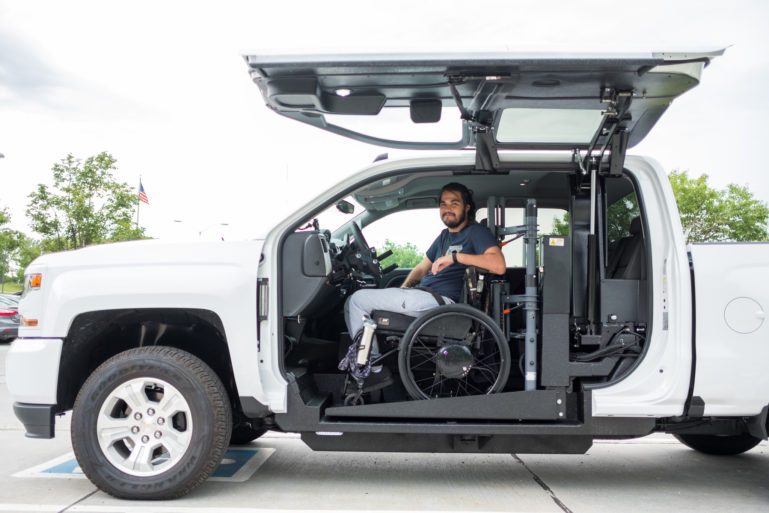
UNMAPPED TERRITORY
“The parts I remember the most, the parts I enjoy the most, are the times when I get to see a person realize what they can still do,” says Young.
Though only a few years old, QLI’s adaptive driving program has already served hundreds of individuals and families. Parents returning to their roles in the family, students returning to autonomous collegiate life, employees hopeful to make a return to work—all of these represent lifestyles that benefit from safe, confident, independently accessible driving.
Despite its obvious impact and already impressive attention to detail, the program continues to evolve. Never settling, always hungry to generate new opportunity, Young promotes a vision of accessibility for the program and for the industry. Cutting-edge technology, including the rise of autonomous vehicles and the increasing prominence of assistive features like lane departure management and adaptive braking, offers a glimpse into the future of driving after injury.
In the short term, Young is focused on expanding the array of technology QLI has available at all times.
“Adding another adaptive car to our fleet, something like a sedan, would help us make more detailed, confident recommendations,” says Young. “Instead of all this practice in a van just to transition to a car—which has its own unique problems to solve for—we’d be able to give users the chance to drive with the car from the start. A larger inventory simply makes our assessments more accurate.”
But the team is focused on more than tools and devices—it is focused on the breadth of people served as well.
As of this writing, QLI clinicians have begun to introduce rehabilitation graduates—those who might have not been appropriate for the program during their residency at QLI—to the driving curriculum after the fact. Young sees this as the beginning of a larger trend.
“Individuals who are long past injury continue to see lots of improvement. There is opportunity there to reevaluate whether independent driving is viable for them. At some point in the future, opening the doors for that kind of access could be huge—not just for former rehab clients, but for our community.”
Ultimately, operating a motor vehicle represents the very thing all of rehabilitation strives to create: independence. It is as central to a person’s freedom as it is their identity. And at QLI, driving is treated with the appropriate reverence.
“It’s common to see men and women, injury survivors, put off learning how to drive with adaptations,” Young says. “Because they’re waiting until they’ve made further physical progress.
“Rightfully so—because they will make that progress. But in the meantime, it can be difficult to feel like a burden, to feel dependent. This is a motivator to be independent, even during that time of recovery. This is a way to say, ‘you don’t need to put life on hold until then.’”



